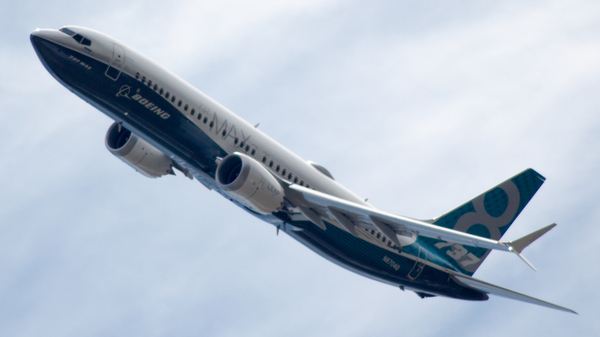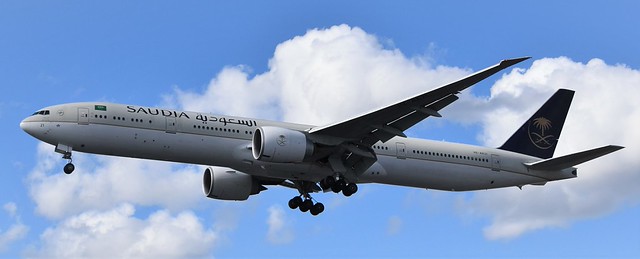Nostrum CRJ2 at Barcelona on Jul 30th 2011, hard landing
Last Update: August 23, 2012 / 11:36:47 GMT/Zulu time
Incident Facts
Date of incident
Jul 30, 2011
Classification
Accident
Cause
Hard landing
Airline
Air Nostrum
Aircraft Type
Canadair Corporate Jetliner
ICAO Type Designator
CRJ2
While the aircraft was descending towards Barcelona the controller suggested the approach routing to be changed to the south of aerodrome due formation of storms approaching the airfield stating that traffic from the north was already diverting. When the aircraft was on a downwind for runway 25R south of the aerodrome the controller advised the storm was about to reach the extended centerline of the runway and "instructed the crew to proceed to mile 4 so as to hasten the landing, since the clouds were approaching the localizer."
The controller subsequently asked the crew whether they would accept a visual approach, which was agreed, the aircraft was cleared for a visual approach. The crew extended the speedbrakes and shortly after lowered the gear to increase drag, the flaps were sequentially deployed to 45 degrees, the aircraft was in landing configuration on the base leg 5nm before touchdown at 1844 feet MSL (198 feet above 3 degree glidepath) and 145 KIAS with a Vapp of 138 KIAS.
At about 4.5nm before touchdown the aircraft encountered a cloud layer, the pilot flying decided to stay above the clouds to maintain visual conditions and thus climbed the aircraft. At 2.8nm the crew regained visual contact with the runway, the aircraft was now 725 feet above theoretical glidepath at 132 KIAS.
The crew observed a magenta echo indicating a storm cell on the weather radar along the extended runway centerline past the runway. They realised their approach no longer met the stabilised approach criteria and would need to go-around. Climbing through the storm cell past the runway end was thus not viable, a go-around turning left was not possible due to conflicting traffic and a go-around turning right not possible due to terrain. The captain thus concluded their only option was to continue the approach.
From that point to 1nm before the runway the aircraft descended at about 1000 fpm, passing the 1nm point at 616 feet still above the glidepath and still not aligned with the runway. At 600 feet MSL the captain took control of the aircraft, deployed the speedbrakes increasing the sink rate substantially to about 3000 fpm, the ground proximity warnings began to issue warnings. The aircraft crossed the runway threshold at 365 feet AGL, the speedbrakes briefly retracted and extended again and remained extended until 20 seconds after landing. About 6 seconds after passing the runway threshold the aircraft touched down with the right main and the nose gear experiencing vertical accelerations of 3.66G, the aircraft bounced becoming airborne for 2 seconds before before touching down a second time at vertical accelerations of up to 2.45G. The spoilers deployed instantly. The crew applied brakes, the rest of the rollout was normal.
After the aircraft had stopped a flight attendant notified the flight crew of neck pain as result of initial contact with the ground. The flight crew made a hard landing entry into the aircraft logs but did not observe any damage.
Following the hard landing entry maintenance performed a hard landing inspection which revealed structural damage to the aircraft.
The cockpit voice and flight data recorders had not been de-energized after landing, the cockpit voice recordings of the accident flight were thus lost.
The investigation is continuing.
Incident Facts
Date of incident
Jul 30, 2011
Classification
Accident
Cause
Hard landing
Airline
Air Nostrum
Aircraft Type
Canadair Corporate Jetliner
ICAO Type Designator
CRJ2
This article is published under license from Avherald.com. © of text by Avherald.com.
Article source
You can read 1 more free article without a subscription.
Subscribe now and continue reading without any limits!
Read unlimited articles and receive our daily update briefing. Gain better insights into what is happening in commercial aviation safety.
Send tip
Support AeroInside by sending a small tip amount.
Related articles
Diploma of Aviation: Common Challenges for Student Pilots
Pursuing a Diploma of Aviation (Commercial Pilot Licence) is an exciting yet demanding journey. For many aspiring aviators, this qualification…
After an Aviation Incident in New York Airspace: What Happens Next
When an aviation incident occurs in New York airspace, whether it’s a commercial jet, a private charter, or a general aviation flight, the…
AeroInside Yearly Aviation Safety Review 2025
2025 is over and it is time to look back and see again what happend in aviation safety. Have a look at our summary below.All in all, 1041 new…
AeroInside Monthly Aviation Safety Review December 2025
December 2025 was a busy month in aviation safety. Please find our summary below.All in all, 63 new articles have been published during last month. 5…
Flight Training Stress: Navigating Turbulence as a Student Pilot
Becoming a pilot is a thrilling and rewarding experience, but the path to the cockpit is often filled with challenges, especially when it comes to…
Newest articles
Tway B38M enroute on Jan 10th 2026, power bank thermal runaway, 8 injuries
A Tway Air Boeing 737-8 MAX, registration HL8579 performing flight TW-634 from Sanya (China) to Cheongju (South Korea) with 32 passengers and 6 crew,…
Saudia B773 at Islamabad on Oct 14th 2024, landed on wrong runway
A Saudi Arabian Airlines Boeing 777-300, registration HZ-AK21 performing flight SV-724 from Riyadh (Saudi Arabia) to Islamabad (Pakistan) with 399…
Subscribe today
Are you researching aviation incidents? Get access to AeroInside Insights, unlimited read access and receive the daily newsletter.
Pick your plan and subscribePartner

ELITE Simulation Solutions is a leading global provider of Flight Simulation Training Devices, IFR training software as well as flight controls and related services. Find out more.
SafetyScan Pro provides streamlined access to thousands of aviation accident reports. Tailored for your safety management efforts. Book your demo today
AeroInside Blog
Popular aircraft
Airbus A320Boeing 737-800
Boeing 737-800 MAX
Popular airlines
American AirlinesUnited
Delta
Air Canada
Lufthansa
British Airways


